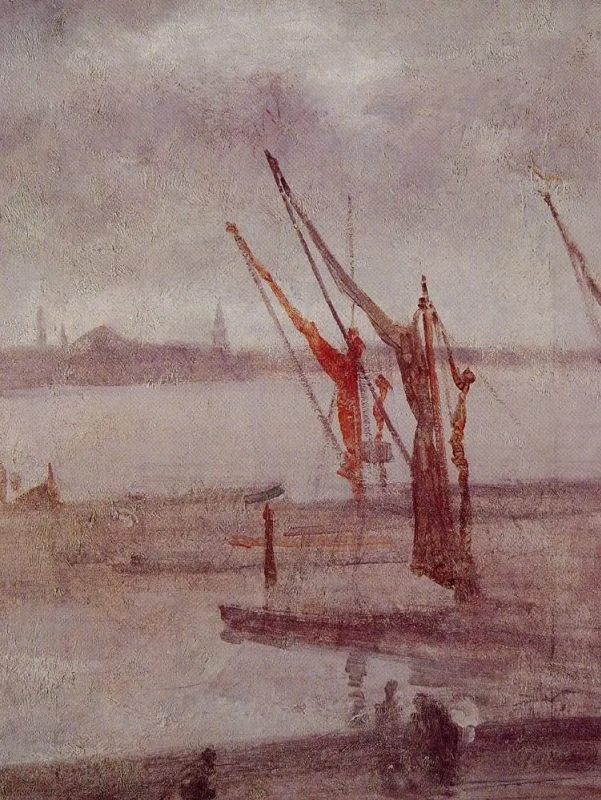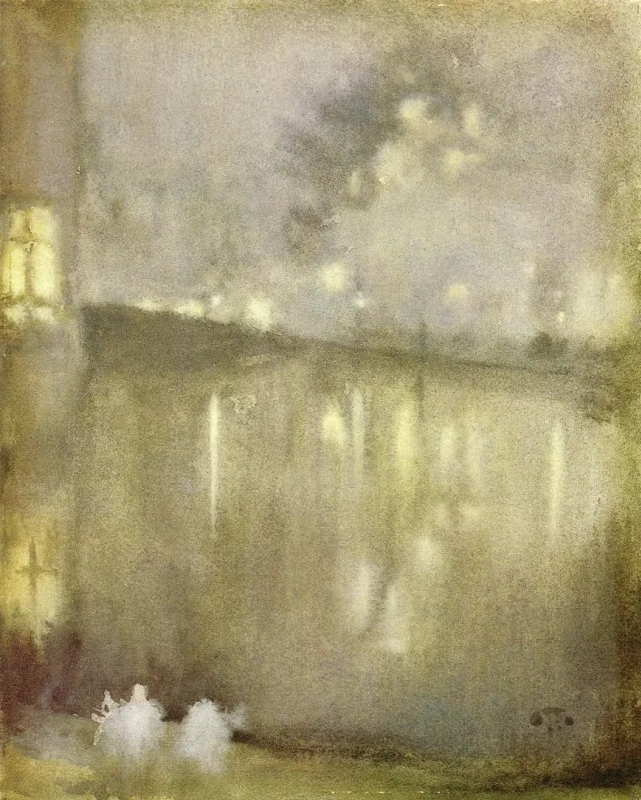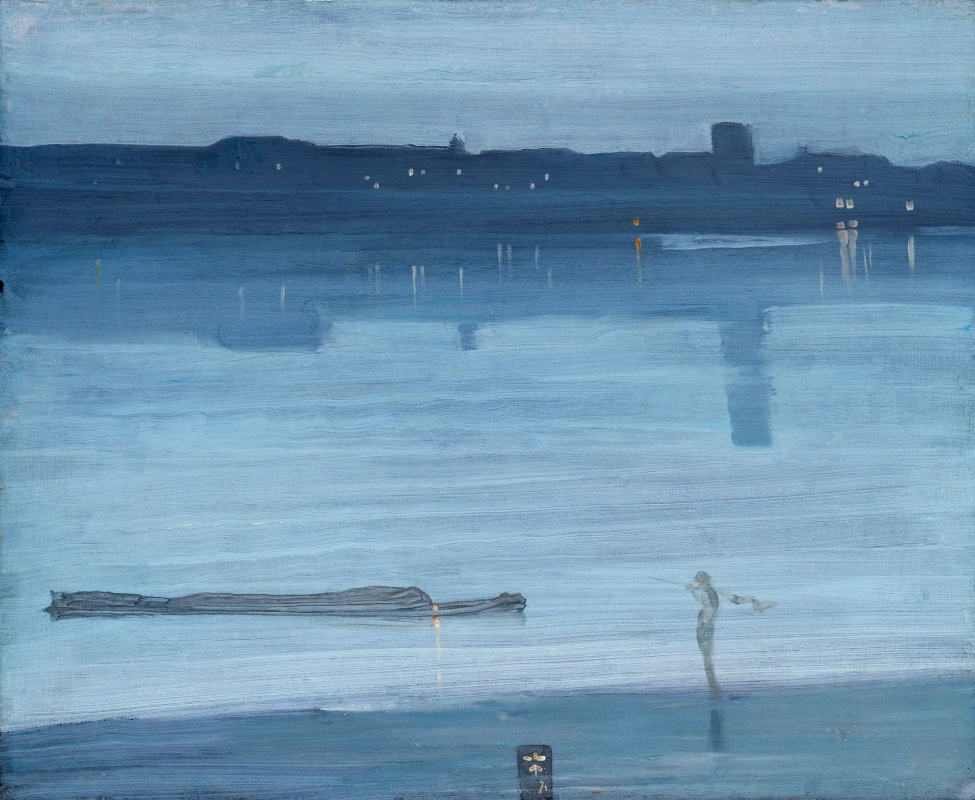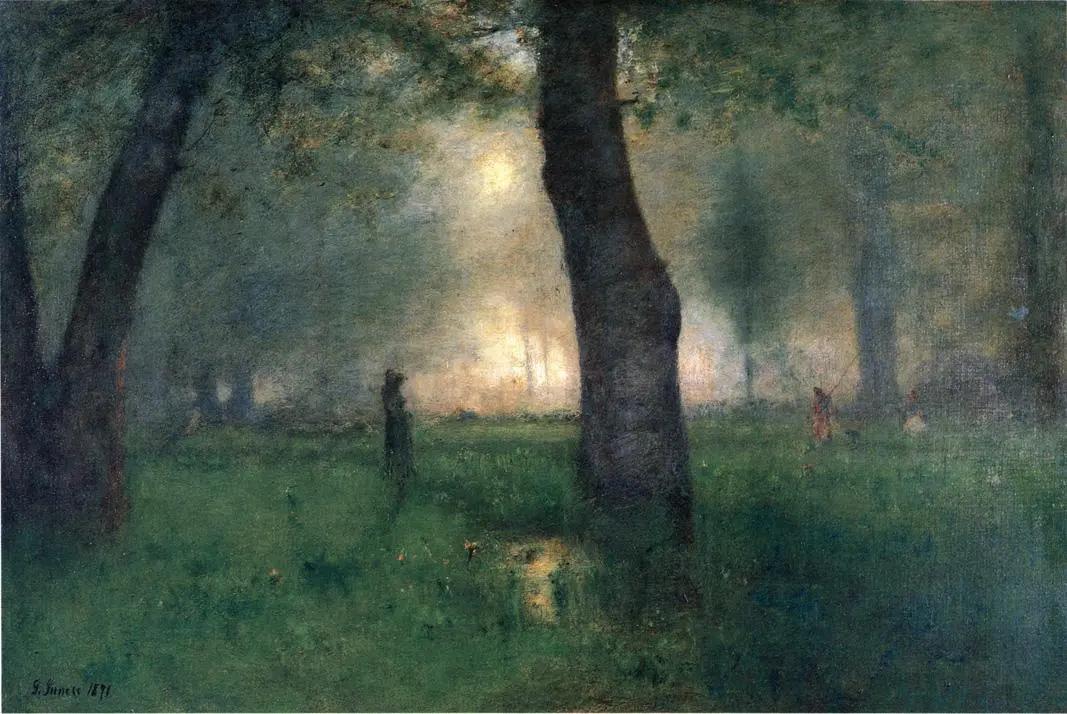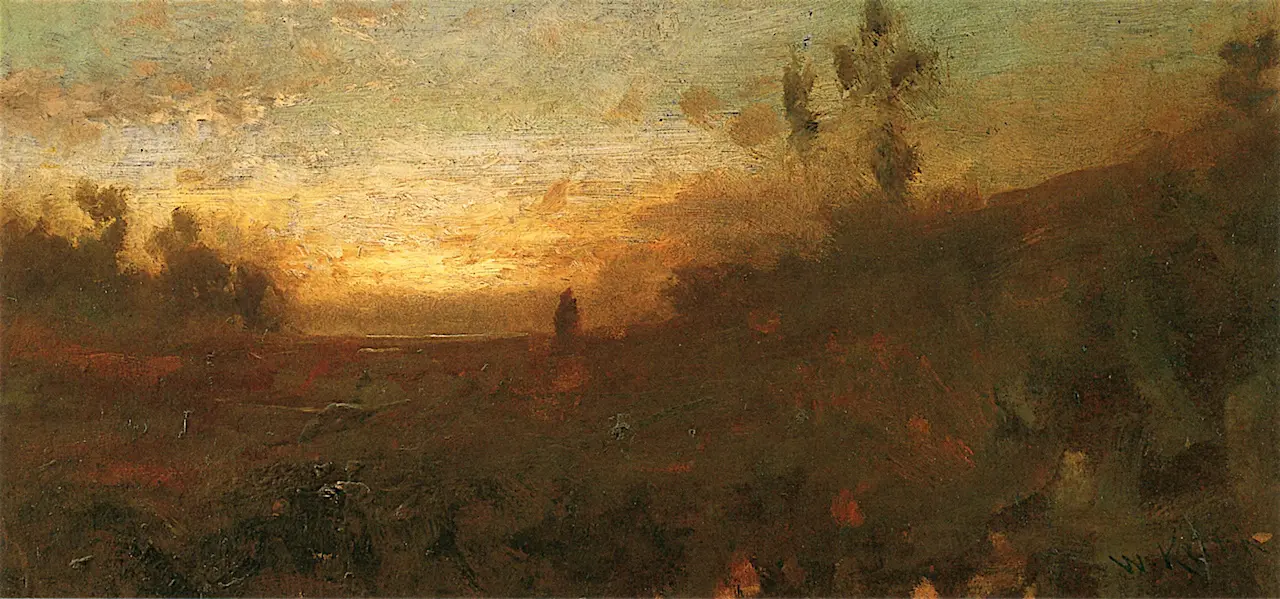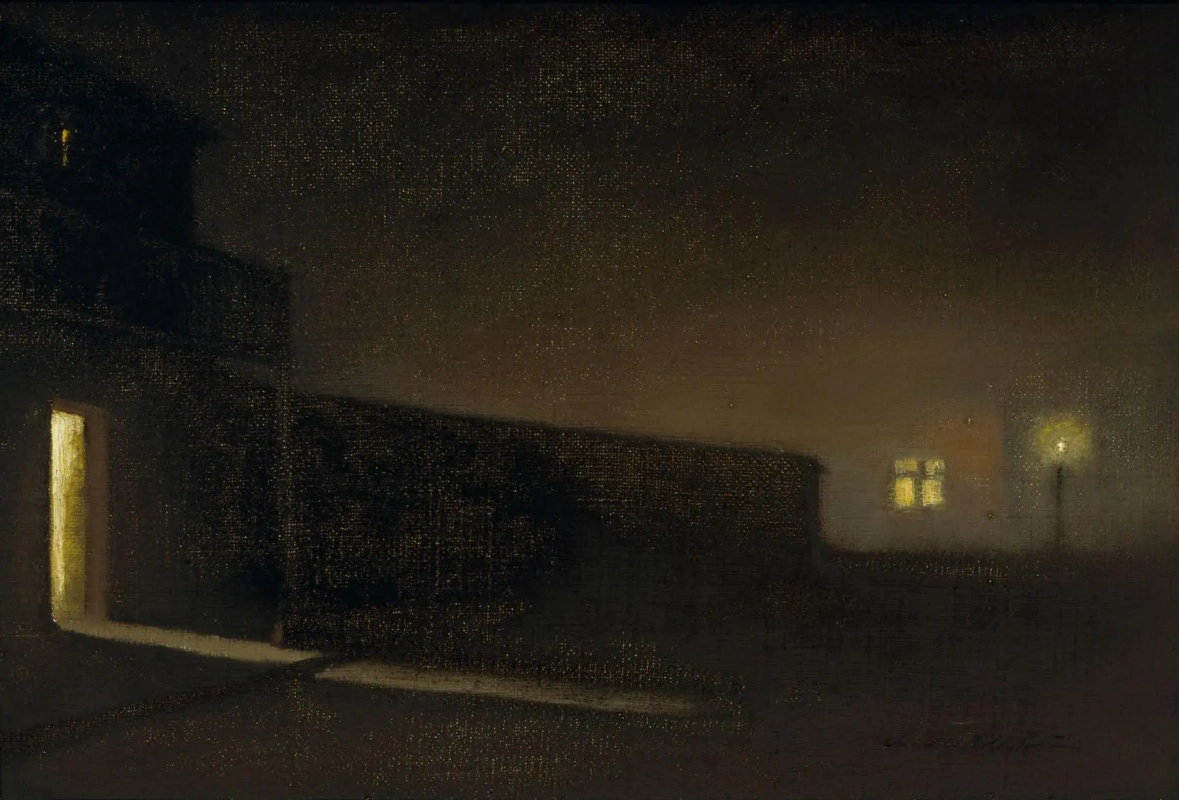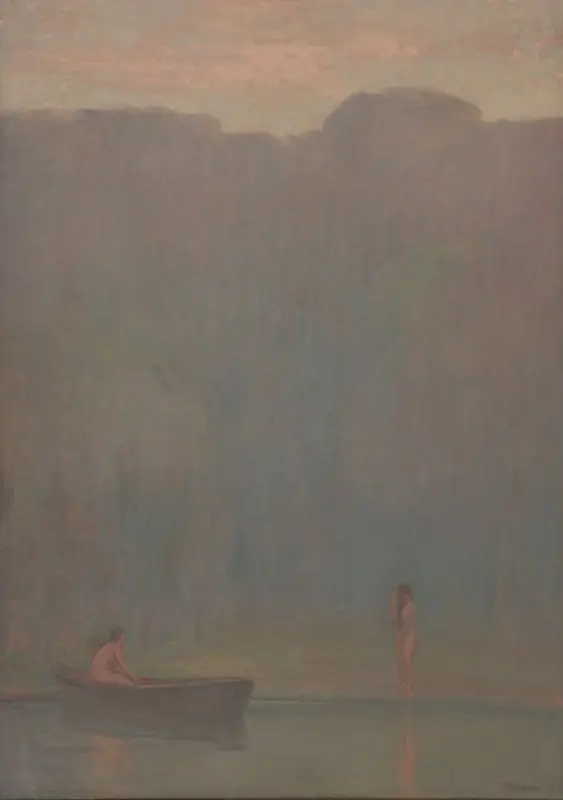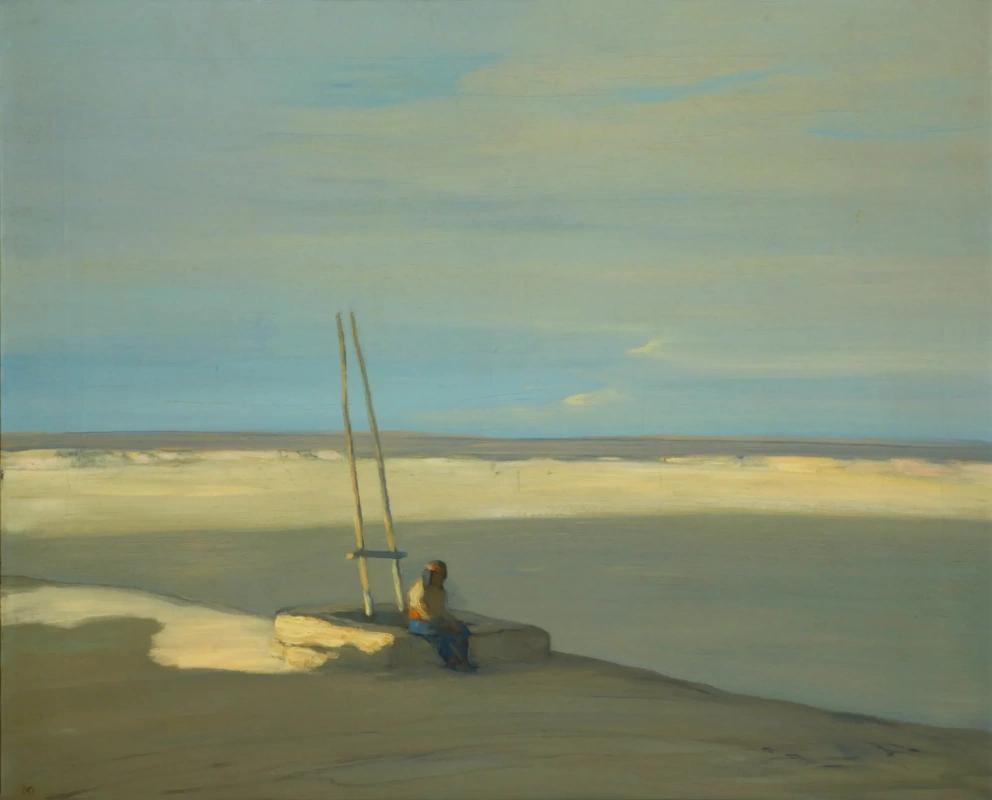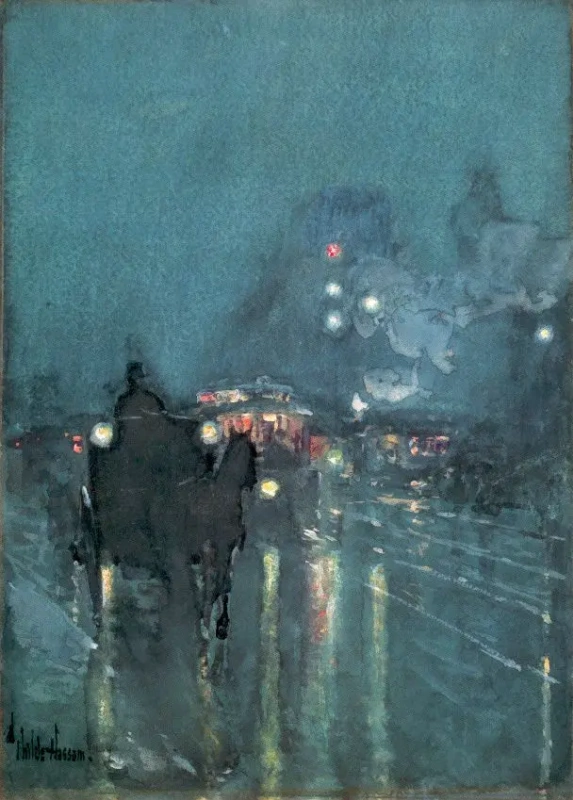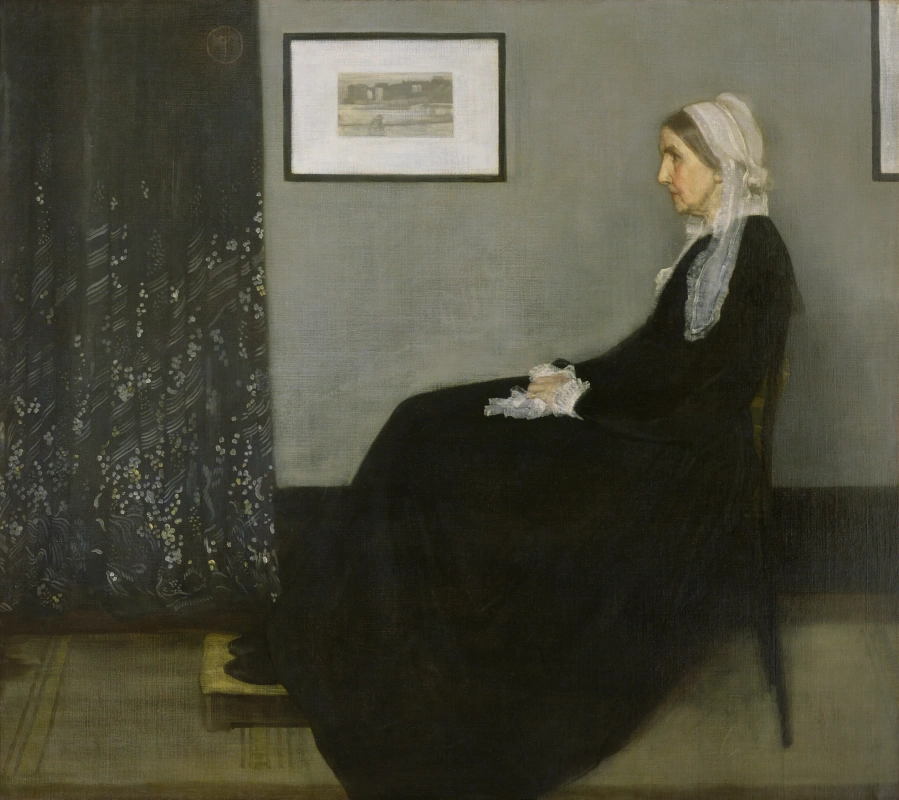Tonalism is often likened to jazz. Both of them sound American, and in both of them, one simple theme, one simple color can unfold plotlessly, emotionally, virtuously, in a variety of shades and nuances. It is just like an improvisation club session: a short string of notes rolling over in endless variations, or a white dress on a white background, white shadows on white walls.
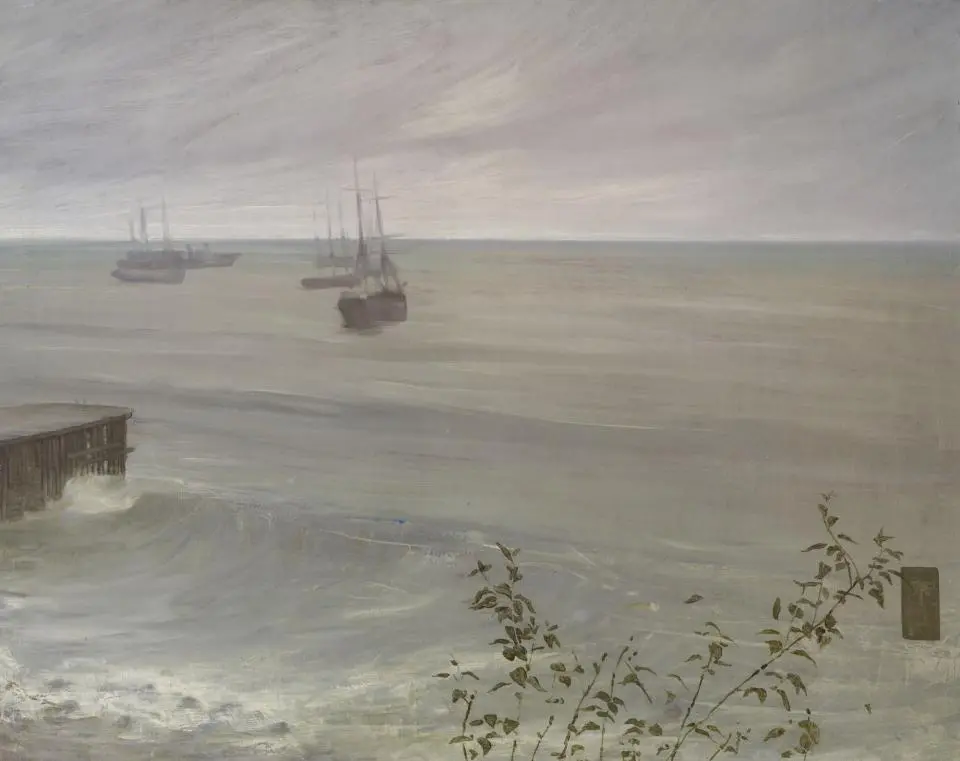
Tonalism is not actually an art movement or art association, but rather a pictural trend, a set of ideas, or an artistic manner that manifested itself in 1880−1910 in America. You can hardly define any artist as an absolute tonalist, but you can confidently find several tonalist works in his/her gallery. Tonalism has become a symbol of the transition from Academic art to Modernism in America, it was an additional way towards Contemporary art, bypassing Impressionism
.
Of cours, nobody used the term "tonalism" at the end of the 19th century. It was only coined in 1972 by Wanda Corn, an art historian. The artists who wanted to name their own research often used the word "Luminism" (for Latin "glowing"), yet not separating themselves from their predecessors who painted landscapes in 1850−1870.
Of cours, nobody used the term "tonalism" at the end of the 19th century. It was only coined in 1972 by Wanda Corn, an art historian. The artists who wanted to name their own research often used the word "Luminism" (for Latin "glowing"), yet not separating themselves from their predecessors who painted landscapes in 1850−1870.
Niagara
1894, 76×114.3 cm
Sentiment rather than impression
Blurred outlines of the objects, unstable positions, fog, haze, reflections, visible expressive brushstrokes… On the face of it, tonalism only seems to be a kind of impressionistic view of the world. However, it is far from this. This view comes not only from the other side of the ocean, but also from within another artistic truth. In fact, tonalist artists have never been really bothered about the state of nature, the changes in lighting, the accuracy of color combinations. They carefully observed the nature, made landscape sketches, brought their sketches to the studio only to use them as memories of their own unique sentiment, the emotion experienced at contemplation of the landscape . They did not care about usual depiction of the facts, they did not consider essential the details they could not remember. Each memory has its special tonality, a special sentiment, and a special spiritual experience, which eventually becomes the picture basis.
Symphony in white, No. 3
1867, 52×76.5 cm
Twilight and music
The easiest way to identify Tonalism is to consider its coloristic decision: one dominant mood color or several close non-contrasting, subdued, hypnotic colors. The diffused light strikes through the saturated air as if through some tangible, dense substance.Unlike the French Impressionists, tonalists were not looking for bright sunlight. Searching for the meaning of time and space, they chose the intermediate states of nature: twilight, dawn, fog, or the wet haze of the sea. In determining the place of a man in the world, they prefer empty walls, infinite twilight depth, quiet solitude, and standoffishness as the background for portraits. Tonalism is an intricate and vanguard approach to depicting the surrounding world, it rejects both the academic copying of nature, and the impressionistic pictorial objectivity of the moment.
James Abbott McNeill Whistler was the first most consistent tonalist artist. He was an American cosmopolitan who lived most of his life in London and Paris. He studied under Charles Gleyre in Paris, and he painted with the French Impressionists. Whistler was inventive and intelligent, he was an aesthetic genius with a disgusting temper; he hit upon the idea of naming his pictures with musical terms: arrangement, nocturne, symphony. Whistler left aside the subjects of the paintings and the names of the people he portrayed. The real subjects of his paintings were color and harmony of color. It is primarily about "Nocturne in Gray and Gold"; oh yes, it is about snow in Chelsea as well.
James Whistler left the US in 1855, and he never returned. Nevertheless, it was he, a transnational artist, who created his own unique style staying in frames of French Impressionism; he revived and cultivated a distinct "American intonation" in this artistic manner. Russian art historian Mikhail German said about Whistler, "This artist who lived so little in his homeland has become, we venture to assume, almost the same man of mark for American painting, as Manet was for French art."
Young American artists came to London and Paris in order to study under him. For two years, Whistler was giving lessons to "five Californian girls" - that was how the pressmen called the young women artists from San Francisco who took Whistler’s classes in Paris and were well in with him. The master deliberately gave them more attention than to his male students.
James Whistler left the US in 1855, and he never returned. Nevertheless, it was he, a transnational artist, who created his own unique style staying in frames of French Impressionism; he revived and cultivated a distinct "American intonation" in this artistic manner. Russian art historian Mikhail German said about Whistler, "This artist who lived so little in his homeland has become, we venture to assume, almost the same man of mark for American painting, as Manet was for French art."
Young American artists came to London and Paris in order to study under him. For two years, Whistler was giving lessons to "five Californian girls" - that was how the pressmen called the young women artists from San Francisco who took Whistler’s classes in Paris and were well in with him. The master deliberately gave them more attention than to his male students.
Weather factor
American art critic Harvey Jones states that Tonalism is a manner born out of the influence of two powerful pictorial factors and one climatic factor. This explains the geographical location of tonalism on the shores of the Pacific Ocean, in northern California.The first factor was surely James Whistler, who gave lessons to Arthur Frank Matthews. After his return to San Francisco, Matthews taught at Mark Hopkins School of Design at the Institute of Arts. Over time, he would become the director of the Institute and use the Whistler’s manner to inspire both art students, and future monumentalists and designers. Matthews’s wife Lucia was one of those "five Californian girls" who were favoured by Whistler in Paris.
The second factor was the painting style of the American artist George Inness, which intricately combined the academic tradition and findings of the French Barbizon artists, as well as those of Camille Corot. Inness studied at a workshop for engraving geographic maps, which made him always strive for topographical accuracy of the landscapes. There, he was imbued with the teachings of Emanuel Swedenborg, which formed his mystical attitude: all the elements of the visible world were God’s emanation. After 1880, Inness turned his art into pure Tonalism.
Lastly, the third factor was the humid climate of California with its morning and evening fog and haze. In California, there is no rapid season changes, and the landscapes keep their colors all year round: grey and green eucalyptuses and olives, burnt and faded ochre-greenish grass, grey fog.
Therefore, while William Chase demonstrated to his students the features of impressionistic painting on the other oceanfront of America, near New York, in the sultry summer art school of Long Island, under a bright sunshine, the Tonalist artists mixed their palettes with all the shades of grey, ochre and deep blue in northern California.
At the lecture for the students of the University of California, Tonalist artist William Keith said that at the dawn of his career, he could not find mountains high enough and sunsets spectacular enough to satisfy his athirst brush. However, over time, he gained experience and learned to be content with simple nature: the sky, hills, and just several trees. Finally, this was quite enough for him to express any of his feelings.
The correct tonality
The paintings of the California Tonalist artists have been taken to national American museums and private collections, thus European art amateurs have not heard much about them. Most often, Whistler appears to be the only person relatable to this special -ism. However, in context of Tonalism, the American art tradition refers a generation of artists who tuned themselves to a special laconic, contemplative pictorial tonality under Whistler’s influence. These were already mentioned Arthur Matthews and his wife Lucia, William Keith, and a few more important and notable artists.Nocturnes. Whistler said that the only artist who can paint nocturnes was Charles Rollo Peters. He was called the Prince of Darkness and the Poet of the Night. He only painted night landscapes, indistinguishably dark or bathed in moonlight, the ruins of San Francisco after the earthquake in 1906, and coastal villas in the Monterey Bay.
Symphonies. Gottardo Piazzoni loved sunsets and the period of moonrise. He had a personal lunar calendar and a family tradition: every evening Piazzoni brought his family to a high hill next to the house to meet the moon. He mainly worked with decorative frescoes. The architectural features of this pictural base simplified Piazzoni’s work: he corrected the perspective, stylized the shapes, often made them quite abstract, and applied quiet colours — grey, brown, and blue, precisely and cleanly.
Arrangements. Half Mexican Indian half Spanish Javier Martinez wore blue shirts, red ties, and had his hair long. Arthur Matthews, the teacher of Martinez at the school of design, recommended his young student to paint trains. However, Javier appeared to be a massively obstinate student. He graduated from school and received an educational grant from the Paris School of Fine Arts. Both in Paris, and on his return to San Francisco, Martinez revels, kicks up a row, travels, and gathers the bohemian society in his studio. Yet through it all, he paints his silent, hypnotic, sleepy and calming pictures for 50 years without departure or rebellion.
Tonalist paintings can easily be found in the galleries of the American artists who painted mostly in an Impressionist manner. These are the snowy landscapes by John Twachtman or the night city landscapes by Childe Hassam. However, the pure Tonalism wanes by the 1920s as the characteristic, distinctive Western American stream in the new art. New generations of artists make experiments with Surrealism
, Abstract painting, and Fauvism
. America, a young country without that centuries-old academic tradition, easily derives from European pictorial experiments building up a solid national realistic shell at the same time.
Tonalism: summary
Artists with a connection to Tonalism
James Abbott McNeill Whistler, William Keith, Arthur Matthews, George Inness, Gottardo Piazzoni, Arthur Atkins, Javier Martinez, Charles Rollo Peters, Thomas Wilmer Dewing.Reference Paintings
James Whistler. Arrangement in grey and black No.1. Portrait of a Mother is marked with aesthetic psychology, meticulous balance, and the composition that is close to mathematically brilliant. The same calm, chemically adjusted harmony in a minimalistic pictural solution looks very brave. Yet thoroughness and attention to everyday life, the sense of the place monumentality make it very American.
Arrangement in grey and black No. 1. The artist's mother
1871, 144.3×162.5 cm
James Whistler’s Nocturne in black and gold. The falling rocket is almost an abstract picture with barely identifiable figures, it is a specter of reality slipping away rather than real night with fireworks, the thick black color and scattered almost vanishing light. This is the best example of the contrast between Tonalism and Impressionism
.
Nocturne in black and gold. The falling rocket
1875, 60.3×46.6 cm
You're an expert, if:
— you know that James Whistler is one of the first Tonalists, but not the only one,— you can distinguish the evening landscapes by Pissarro or Monet from the nocturnes by Hassam or Whistler by their coloristic approach,
— you search sentiment and spiritual revelation in the landscapes by the Tonalist artists, rather than geographical accuracy of the depicted terrain.
You're a layman, if:
— you believe that any picture with indistinct object outlines is nothing but Impressionism ,— you are sure that America had no real art before Grant Wood and Edward Hopper.
Main illustration: James Whistler. Symphony in Gray and Green: The Ocean, 1866
Author: Anna Sidelnikova
Author: Anna Sidelnikova
Художники, упоминаемые в статье








